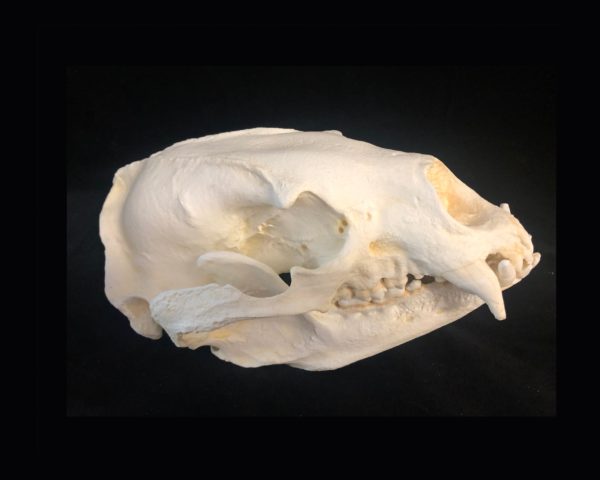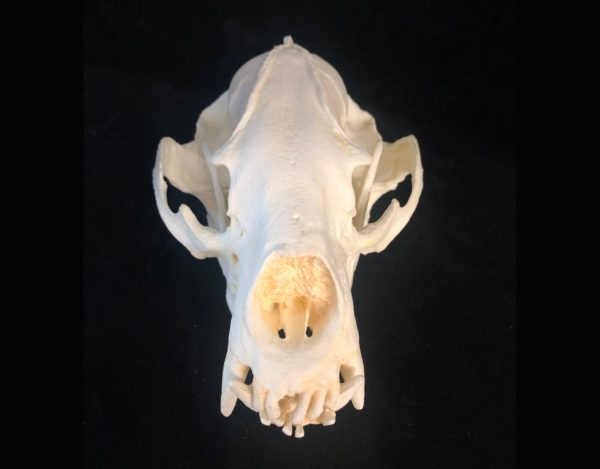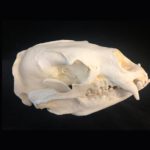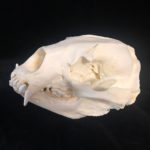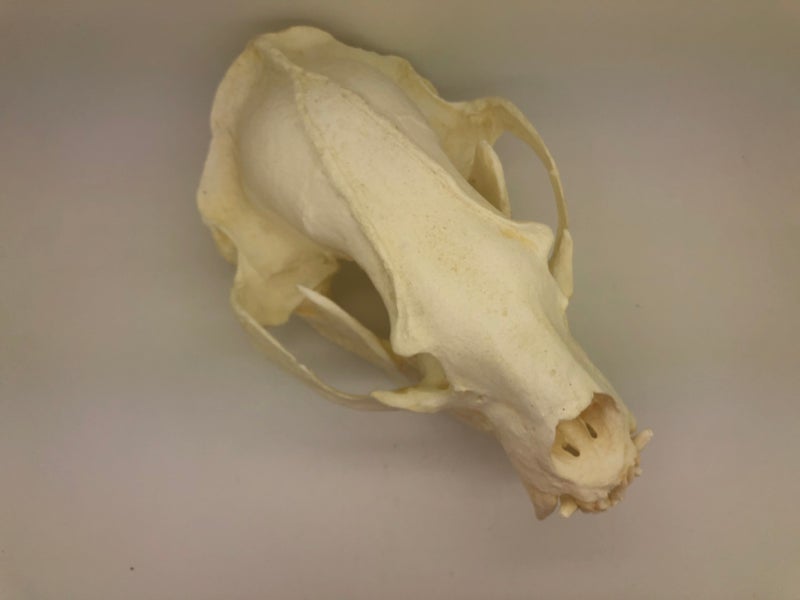Himalayan Bear Skull Replica
$228.00
The organs and bones of the Himalayan Bear or Asiatic Black Bear are believed to hold the power of the animal, are highly valued and sought after for use in Asian traditional medicines. Asiatic black bears have been known to occasionally kill humans.
- Description
- Additional information
Description
Himalayan Bear Skull Replica measures 10 inches. Himalayan bear skull replica is museum quality polyurethane cast. Made in the USA. Cast from original specimen. 2-part skull (separate cranium and jaw). Our precise skull can be used as a teaching tool, museum skull exhibit, home décor skull, or office décor skull.
Ursus thibetanus or the Asiatic black bear ranges from Pakistan through Nepal and Sikkim to Bhutan and into China, Southeast Asia and the Amur region of the USSR.
The Himalayan Bear or Ursus thibetanus, also known as the Himalayan Red Bear, Isabelline Bear or Dzu-Teh, is a subspecies of the Brown Bear. One of the largest of living carnivores, grizzly bears are 1 to 2.8 meters in length from head to rump and their tails are 65 to 210 mm long.
They are 90 to 150 cm tall at the shoulder and can tower at an intimidating height of 8 feet when standing upright on their hind legs. They range in weight from 80 to more than 600 kg. Himalayan bear or Ursus thibetanus fur is usually dark brown, but varies from cream to almost black.
The Himalayan Bear or Ursus thibetanus in the Rocky Mountains have long hairs along the shoulders and back which are frosted with white, giving a grizzled appearance, hence the common name grizzly bear in that region.
Brown bears are extremely strong and have good endurance; they can kill a cow with one blow, outrun a horse, and drag a dead elk uphill.
Himalayan Bear or Ursus thibetanus are omnivorous creatures and will eat just about anything. Their diet consists of acorns, nuts, fruit, honey, roots, and various insects such as termites and beetle larvae. If food is scarce, they may turn to eating livestock such as sheep, goats, and cattle.
This subspecies is listed as ‘vulnerable’ due to encroachment of human population, forest fires and the timber industries; these have all reduced the bear’s habitat.
There is also a high mortality rate among the newborn. And even though hunting of the black bear has been forbidden since 1977, there is still a large problem with poaching.
Shop More Museum Quality Bear Skulls in Bear Skull Store
Additional information
| Weight | 9 lbs |
|---|---|
| Dimensions | 10 in |
| Himalayan Bear Facts: | Kingdom: Animalia |

